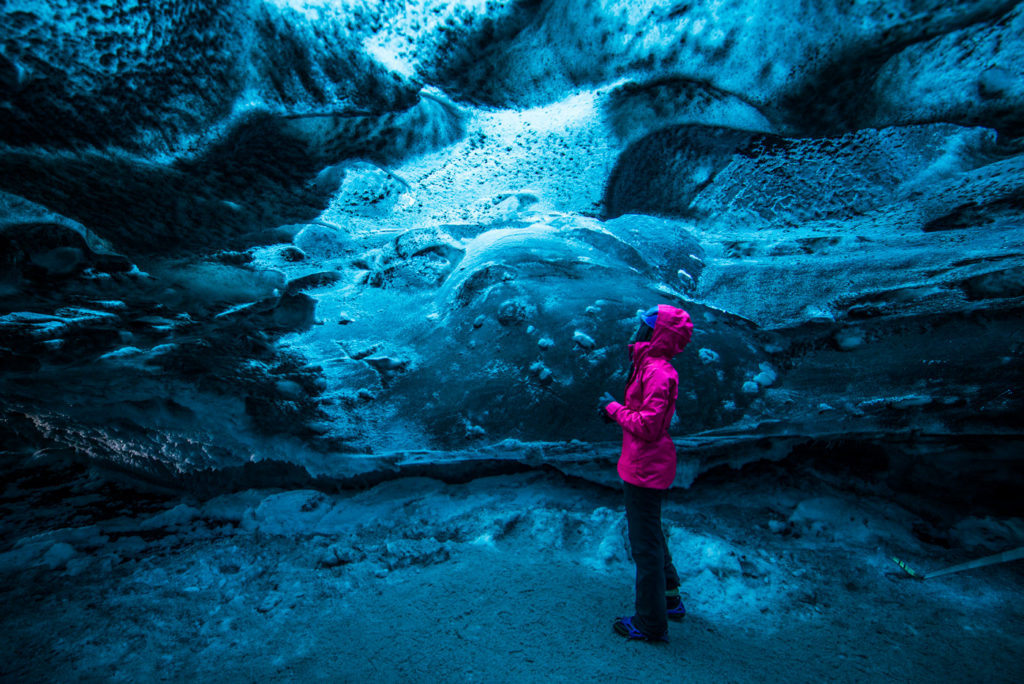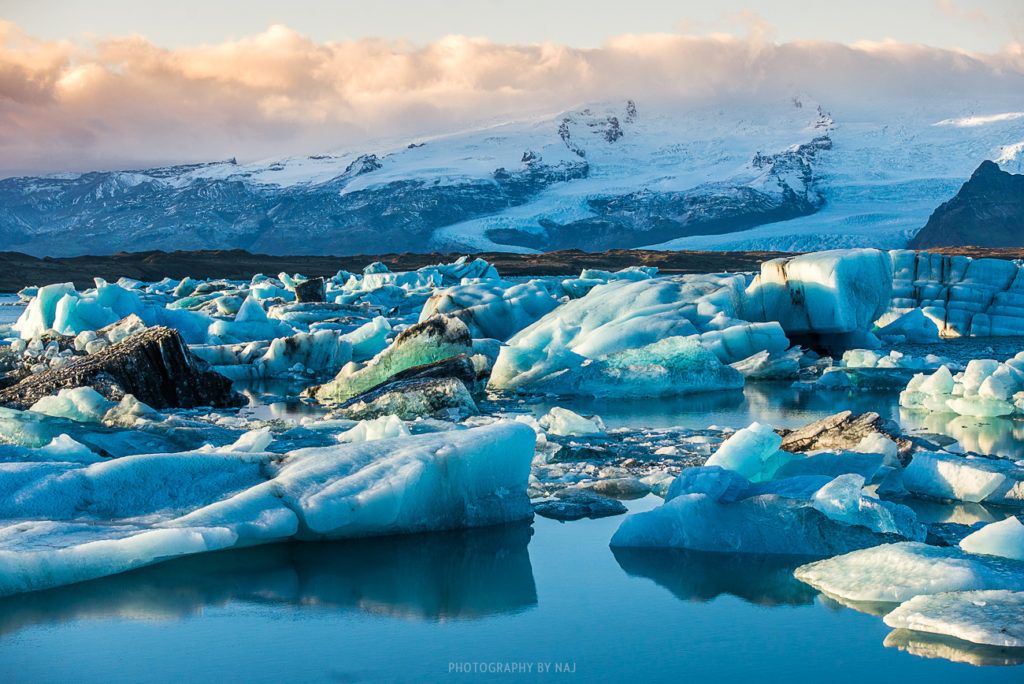Iceland to Islands

Words by Daniel Bosley; Pictures by Aishath Naj
An old Maldivian legend tells of a giant wall at the end of the earth, holding back great waters that would destroy the world if evil spirits succeeded in their nightly efforts to unleash the floods.
The only way to repair the walls’ damage – inflicted by the demons’ malicious licking, apparently – was to say the gunuthu prayer during fathis namaadu (morning prayers).
While probably more useful to get people to the mosque in the mornings, this tale seems particularly relevant after our recent trip to Iceland. At the far end of the world from the Maldives, Iceland (and neighbouring Greenland) are home to Europe’s largest glaciers, which continue to recede at unprecedented rates.
Despite this distance, while visiting an ice cave formed by meltwater on the fringes of Vatnajökull glacier, it was hard not to think of the white beaches and swaying palms 6,100 miles away. For while these two countries are superficially opposites, they both sit at the extreme end of global climate change.
It is perhaps for this reason that the people of both countries (incidentally, both numbering around 350,000) now welcome over 1 million tourists each year who come to gaze in wonder at nature in its raw, exposed, and vulnerable majesty.
While the accelerated melting of the ice caps and glaciers is now a well-documented symptom of climate change, the effect of warming oceans and rising sea levels on the Maldives is less well understood.

The most common theory is that the Maldives – lying an average of 2.4 metres above sea level – will be flooded as the glaciers melt, though others contend that reef islands can adapt and even grow in response to changing sea levels. Man-made structures, which disrupt natural island formation (and erosion), are making the impact of climate change in the atolls harder to gauge.
Extreme weather may drive away tourists, changing ocean currents may drive away fish, or a global food crisis could mean people have less money to spend on Indian Ocean getaways. Either way, what has started in Iceland will end in these islands.
As new theories emerge, the consistent conclusion is that any rapid change in ocean levels and weather systems will be catastrophic for modern civilisation across our globe. At a time when populist leaders seek to build walls and narrow horizons, this earthly perspective is more important than ever.
Returning to those demons at the end of the world, another theory suggests that, around 12,000 years ago, a period of global warming caused millions of tons of glacial water to build up behind an ice dam in North America. When the wall became too thin, it was breached, sending huge amounts of fresh water rushing into the ocean, eventually triggering a mini ice age 11,000 years before Maldivian prayers could stop it.
A little more faith and a lot more research will be needed if we are to understand more clearly the myths and realities that link Icelands and islands.
(…and no, we didn’t lick the ice.)

Leave a comment